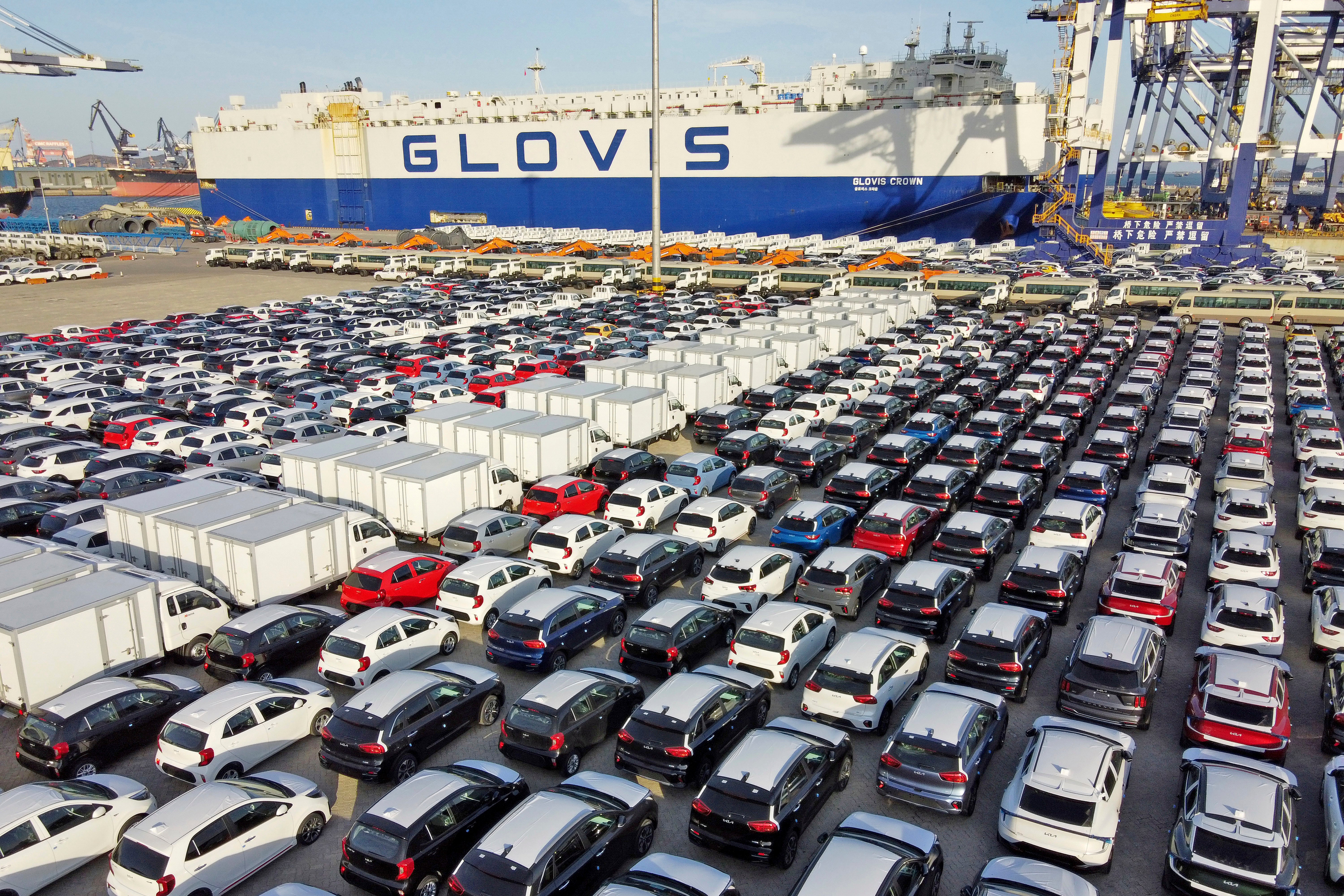China trade surplus surges to record as exports accelerate
China’s monthly trade surplus soared to a record $97.9 billion in June as export growth accelerated following the easing of anti-virus controls that shut down Shanghai and disrupted trade

Your support helps us to tell the story
From reproductive rights to climate change to Big Tech, The Independent is on the ground when the story is developing. Whether it's investigating the financials of Elon Musk's pro-Trump PAC or producing our latest documentary, 'The A Word', which shines a light on the American women fighting for reproductive rights, we know how important it is to parse out the facts from the messaging.
At such a critical moment in US history, we need reporters on the ground. Your donation allows us to keep sending journalists to speak to both sides of the story.
The Independent is trusted by Americans across the entire political spectrum. And unlike many other quality news outlets, we choose not to lock Americans out of our reporting and analysis with paywalls. We believe quality journalism should be available to everyone, paid for by those who can afford it.
Your support makes all the difference.China’s monthly trade surplus soared to a record $97.9 billion in June as export growth accelerated following the easing of anti-virus controls that shut down Shanghai and disrupted the flow of goods.
Exports rose 17.9% over a year ago to $331.2 billion, up from May’s 16.9% growth rate, customs data showed Wednesday. In a sign of weak Chinese demand, imports rose just 1% to $233.3 billion.
China’s global trade surplus swelled by 90% compared with a year ago.
China’s trade has been depressed by weak global demand and anti-virus controls that shut down Shanghai, site of the world’s busiest port, and other industrial centers starting in late March. The Port of Shanghai says cargo handling has returned to normal, but economists warn the shock will be felt for months in China’s trading partners.
“Exports rebounded strongly as shipping bottlenecks eased,” said Julian Evans-Pritchard of Capital Economics in a report. “But we think this may be the last hurrah for China’s pandemic export boom before shipments drop back on cooling demand.”
Weak Chinese demand for imports reflects a slump in construction, a major customer for foreign iron ore and other raw materials, amid a government crackdown on use of debt that has chilled the vast real estate industry.
Forecasters have cut estimates for China’s economic growth to as low as 2% this year, well below the ruling Communist Party’s target of 5.5%. Some expect activity to shrink in the quarter ending in June before a gradual recovery begins.
Exports to the United States surged 19.3% over a year ago to $56 billion despite lingering tariff hikes in a trade war over Beijing’s technology ambitions. Imports of American goods edged up 1.7% to $14.6 billion.
China’s politically volatile trade surplus with the United States widened by 26% from a year earlier to $41.4 billion. It was among irritants that prompted then-President Donald Trump to launch the trade fight and hike import taxes.
Exports to the 27-nation European Union rose 17.1% from last June to $50.5 billion, while imports of European goods climbed 9.7% to $25 billion. China’s trade surplus with Europe widened by 65% to $25.4 billion.
Imports from Russia, mostly oil and gas, gained 56% over a year ago to $9.7 billion. Exports to Russia sank 17% to $5 billion.
China’s growing purchases of Russian energy are irritating Washington and its allies at a time when they are enforcing trade and financial sanctions to punish President Vladimir Putin’s government for its Feb. 24 invasion of Ukraine.
Beijing declared ahead of the attack that it had a “no limits” friendship with Moscow. It criticizes the sanctions but has avoided helping Putin for fear of losing access to Western markets and the global banking system.
China bought 20% of last year’s Russian crude exports, according to the International Energy Agency.
China’s “zero-COVID” strategy that confined Shanghai’s 25 million people to their homes starting in late March helped to keep case numbers low but disrupted manufacturing and trade.
China’s economy grew by a weak 4.8% over a year earlier in the quarter ending in March. That was an improvement over the 4% rate in the final three months of 2021.
The ruling party is trying to shore up growth with tax refunds to entrepreneurs, easier credit and spending on building public works.
___
General Administration of Customs of China (in Chinese): www.customs.gov.cn